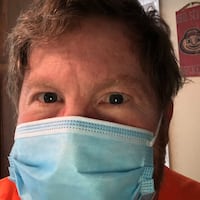The Oxford area’s rate may be misleading because some students at Miami University who live in other states, may have been vaccinated back home, and that information is unavailable to local health officials. Other ZIP Codes on the low end are the Somerville area (45064) and 45067, which includes Trenton, both at 45 percent.
These rates by ZIP code allow county officials to get a clearer picture of where efforts should be focused on trying to increase the vaccination rate. They also show, for any community, how geographic, socio-economic and other factors can have an influence on how many people in a community are becoming fully vaccinated.
Jordan Luttrell-Freeman, a county epidemiologist, said the county’s vaccination rates — lower in rural areas, higher in urban and suburban areas — echo national trends.
“Places like West Chester, we know, by size, there are a lot more folks that are higher income, compared to places like Hamilton or Middletown,” said health-department spokeswoman Erin Smiley.
It has long been known, she said, that income and education levels “can make a huge difference in someone deciding to get a vaccine, or even, frankly, just going to a doctor.”
Another reason rural areas may have lower vaccination rates is a misperception that people living in rural areas are safer from the disease because they live farther apart than city or suburban people.
“We know that’s not true,” Luttrell-Freeman said, adding that there was a time late last year “when the Dakotas were the deadliest place on earth for COVID-19. The rural South got ravaged as well.”
Children’s vaccine rates cause worry
Leah Elliott, another epidemiologist with the county, and the others also voiced concern about low rates among children, particularly as students are back in class, some of them not required to wear masks.
“Only 39.1 percent of Butler County 12-to-14-year-olds have been vaccinated with at least one (shot),” Elliott said. By contrast, many of the older age groups are “well over the 50 percent mark,” she said. For example, 85.3 percent of people 85 and older are vaccinated.
Among the least vaccinated children aged 12-17 were those in Somerville and Hamilton ZIP codes. Here are those rates, from highest to lowest:
- 45069 (West Chester), 60 percent
- 45050 (Monroe) 49 percent
- 45014 (Fairfield) 47 percent
- 45044 (Middletown) 43 percent
- 45011 (Hamilton) 43 percent
- 45056 (Oxford) 42 percent
- 45053 (Okeana) 40 percent
- 45013 (Hamilton) 35 percent
- 45042 (Middletown) 30 percent
- 45067 (Trenton) 30 percent
- 45015 (Hamilton) 29 percent
- 45064 (Somerville) 22 percent
Since Aug. 1, some 1,945 students age 12-17 have contracted COVID-19, according to health department data.
“Our younger folks may not always get as sick as somebody who’s 70 or 80, but they certainly are the spreaders,” Smiley said. “And especially if someone is asymptomatic — they’re not showing any signs that they’re sick — those folks generally can generate a lot of these outbreaks that we saw early on in the pandemic.”
For that reason, as well as the danger to the children themselves, “We really need to work hard to get those younger folks vaccinated,” Smiley said.
Luttrell-Freeman noted that a study by the University of Pittsburgh and Carnegie Melon University found that in Ohio counties where students in kindergarten through high school learned fully remotely during the 2020 fall semester, there was slower spread of the disease and fewer deaths than around schools with mostly in-person classes.
“The vaccine is extremely effective, and when you’re in that kindergarten-through-12th-grade setting, transmission is very high,” Elliott said. “Especially for those schools that don’t mandate masks.”
Officials: Don’t relax about COVID-19
New COVID-19 cases decreased in the county last week, after rising repeatedly during recent months. But it’s not time to relax, officials said.
“After two months of cases going up and up and up, we saw it sort of stabilize last week,” Luttrell-Freeman said. “It’s gone down this week. It’s not gone down a whole bunch, but it’s gone down, which is good.”
“We did see a pretty significant decline this week from last week,” he said. But: “It’s too soon to know whether that’s going to continue to go down.”
“It’s important that we not confuse the light at the end of the tunnel for being out of the tunnel,” he said. “Cases are going down, but someone who gets COVID while cases are going down are just as infectious as somebody who got COVID while cases were going up.”
About the Author

